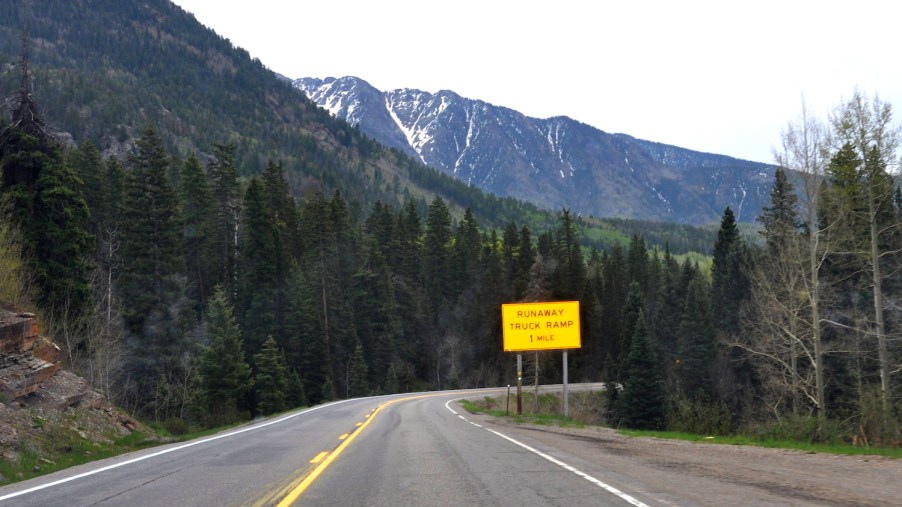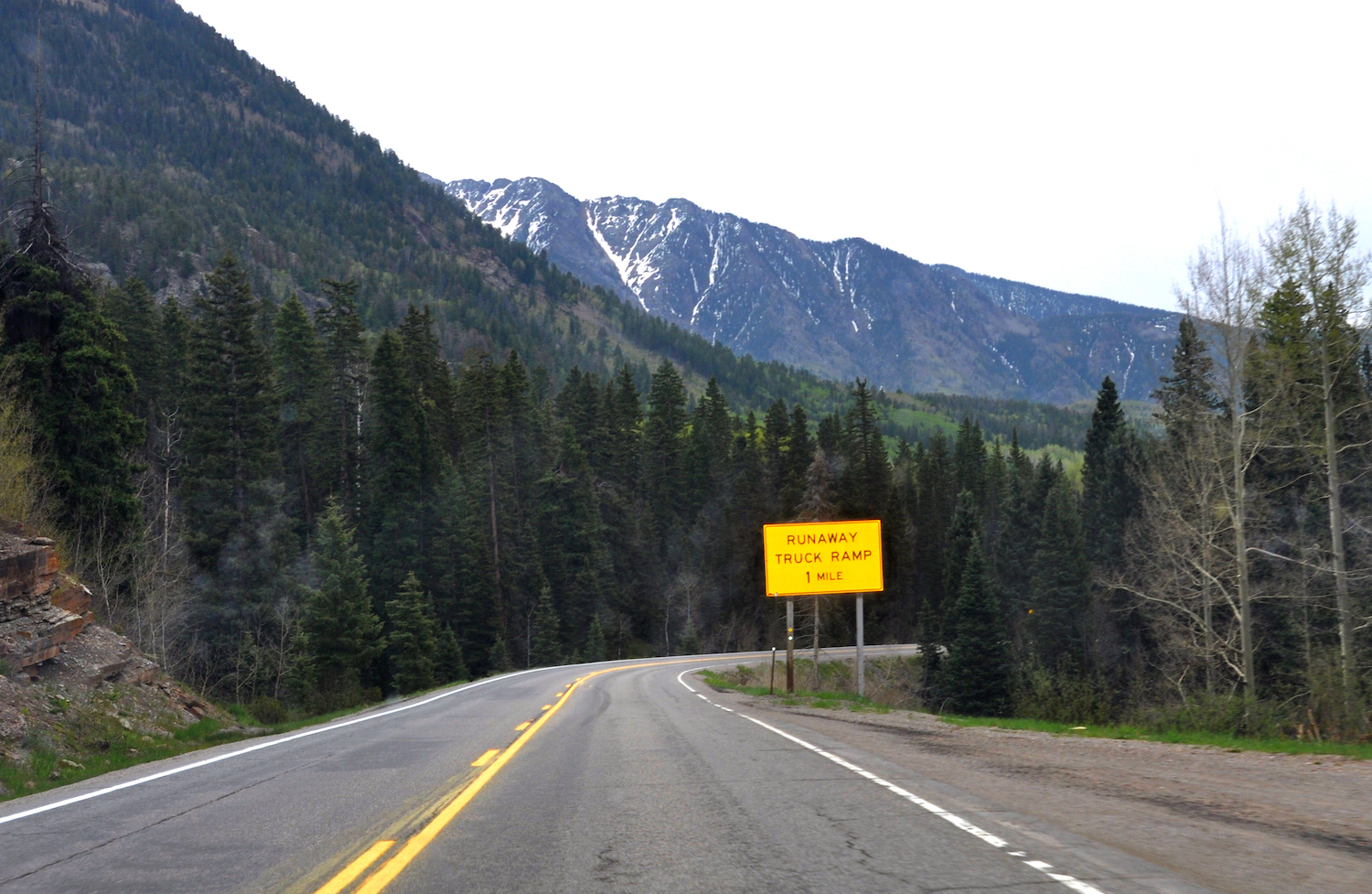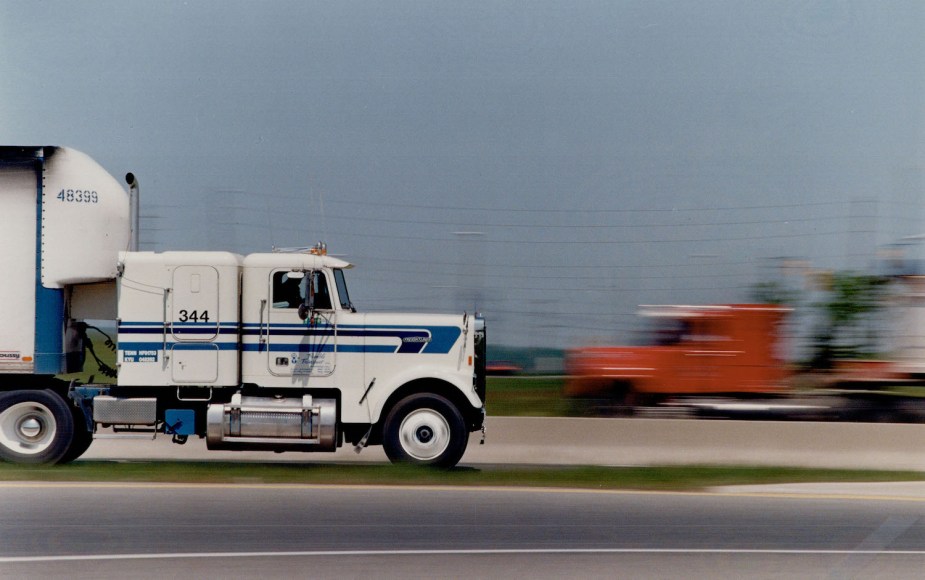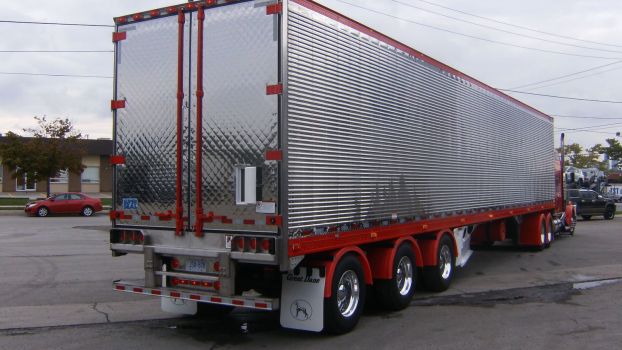
What Would Happen if You Accidentally Entered a Runaway Truck Ramp?
So, you’re cruising over a mountain pass and see a sign: Runaway Trucks Ramp. As the highway descends out of the mountains, the ramp itself comes into sight. It’s a right-side exit leading to a short gravel road up a steep bank. You wonder to yourself, What would happen if I accidentally steered onto that runaway truck ramp? Here’s the scoop: your car or even half-ton pickup truck would stop—quickly—and probably end up hopelessly stuck up to its axles. What’s interesting is how the runaway truck ramp would force your vehicle from highway speeds down to a complete standstill.
Why does America have runaway truck ramps?
Runaway truck ramps are for stopping trucks that cannot stop themselves. Truckers only use a ramp once their hydraulic and engine brakes have failed, and they are hurtling towards a certain crash.

Highway engineers built the first runaway truck ramp in the 1960s. Today, mountainous states study crash data and choose to install runaway truck ramps alongside especially dangerous sections of road. There’s no current survey of how many runaway truck ramps exist, but in 1990 there were 170 in 27 states.
Back in 1980, the state of Pennsylvania published a report on constructing a runaway truck ramp near Pittsburgh. It cost $600K back then, which would be $1.2M now. But there was no existing slope to support said ramp; its engineers had to spend almost half that money assembling a massive retaining wall. Many other ramps might be cheaper.
What happens when a truck uses a runaway truck ramp?
When a truck driver steers onto a runaway truck ramp, the roadway uses a combination of a steep incline, high-resistance surfaces such as gravel and sand, and even a cable net to stop the truck.

Many runaway truck ramps are built in stages. The first stretch may be a regular pavement road with a steep incline. A semi truck that isn’t heavily loaded and has partial brakes might be able to stop itself on this first section.
If you steered onto a runaway truck ramp, you might be lucky enough to encounter one with a paved section, stamp your brakes, and stop before damaging your vehicle. Or you might not.
Many runaway truck ramps have a section of small gauge gravel. This next section is engineered to further slow down—and possibly stop—a heavily loaded truck. This is because the gravel offers a lot more rolling resistance than pavement. It is fine gauge so truck wheels sink into and stop.
So if you were hurtling up a runaway truck ramp and encountered a fine gravel section, you would likely sink up to your bumpers and seriously damage the underside of your vehicle before you stopped. If you somehow kept rolling, you might end up in the sand trap.
Some runaway truck ramps end in what’s called a sand trap. This is just a big pit of deep sand. Its engineered so trucks will sink deep into its surface and come to a stop. If you hit a sand trap in your vehicle you would probably in and get even more stuck than in a gravel segment. You most certainly would need to wait for a tow.
Several runaway truck ramps even end in a big cable net. This is designed to stop a moving truck once and for all. If you hit this net, you would likely damage the front of your vehicle. If you were somehow moving fast enough, the collision might even deploy your air bags.
Do runaway truck ramps damage trucks?
Yes, runaway truck ramps usually damage the underside of runaway trucks. This is one reason truck drivers only use them to avoid and even worse crash.
For a technical paper, a team ran a loaded dump truck up a Pennsylvania runaway truck ramp. They were only moving 35 MPH so found that the only damage was to lower parts of the engine and the air tanks for the brakes–according to Car and Driver.
At higher speeds, or in a less sturdy vehicle, the damage could have been much worse. Finally, some towing companies will charge $2,500-$4,000 to drag a badly damaged truck off of a runaway truck ramp. So it would be wise to avoid runaway truck ramps unless your brakes fail and you need to stop your vehicle.
Next, find out what some towns have ‘No Engine Brakes’ signs for truckers, or watch what happens when a semi truck uses a runaway ramp in the video below:
Check out a brand new type of runaway truck ramp technology in this final video:






